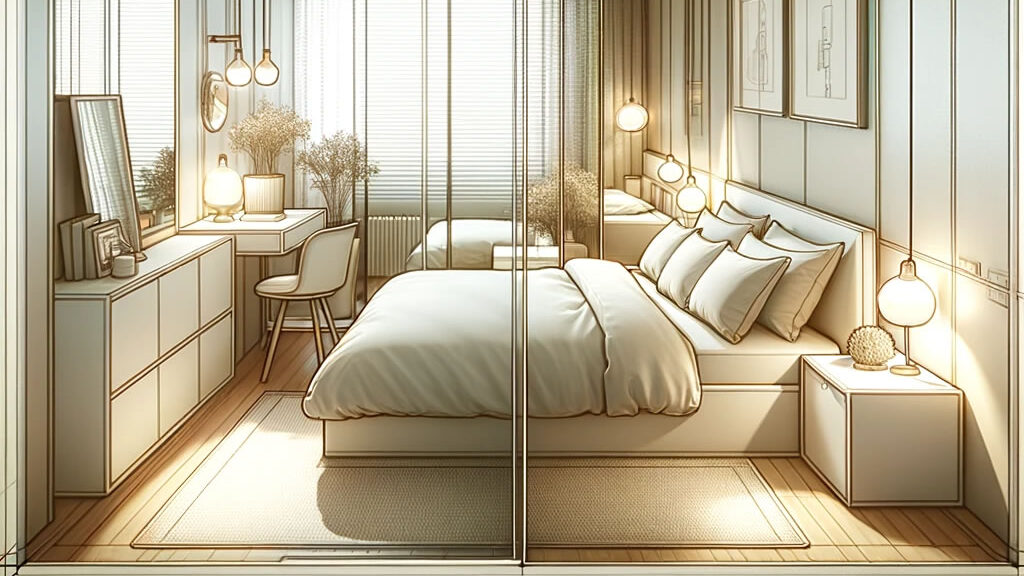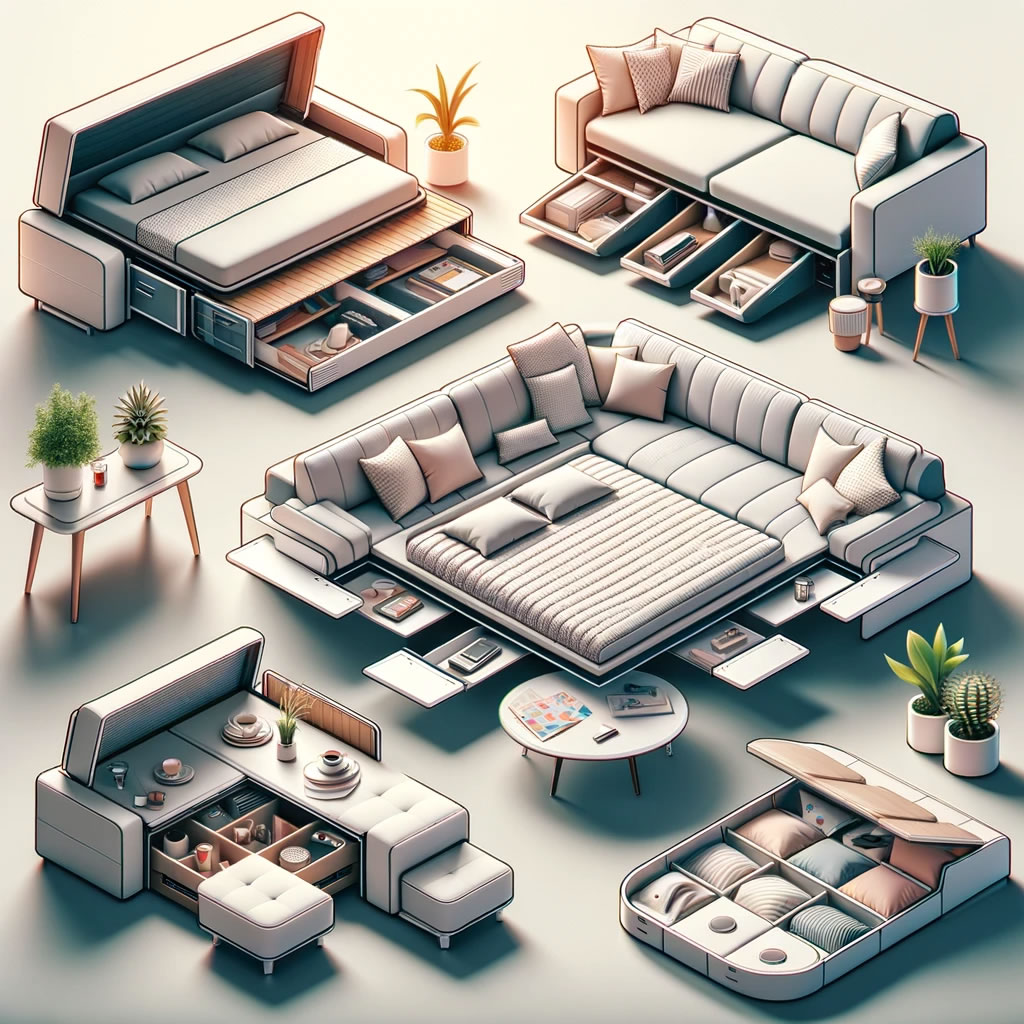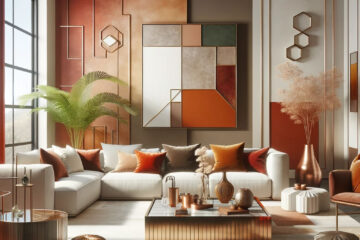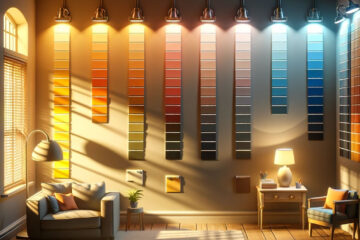In the realm of interior design, maximizing small spaces is a challenge that calls for creativity and smart planning.
The key lies in making every inch count, transforming compact areas into functional, stylish, and comfortable living spaces.
Table of Contents

The Challenge of Small Space Living
Living in a small space often means dealing with limited room and the need for clever design solutions.
It’s about striking a balance between functionality and aesthetics, ensuring that the space meets your needs while also reflecting your personal style.
Embracing Creativity and Efficiency
Maximizing small spaces requires a blend of creativity and efficiency. It involves thinking outside the box, using space-saving furniture, and employing visual tricks to create the illusion of more space.
Practical Tips for Small Spaces
Think Vertically: Utilize wall space for storage and decor.
Choose Light Colors: Opt for light hues to make the space feel larger.
Multi-Functional Furniture: Invest in furniture that serves multiple purposes.
Define Zones: Create distinct areas for different activities to maximize functionality.
By embracing these strategies, you can turn a small space into a cozy, efficient, and stylish home.
Optimizing Storage in Compact Areas
One of the most significant challenges in small spaces is finding adequate storage. However, with smart strategies, you can maximize storage potential without compromising on style.
Thinking Vertically for Storage
Vertical space is often underutilized in small rooms. Installing shelves or floating cabinets up the walls can create ample storage opportunities without taking up floor space.
Multifunctional Furniture: A Game-Changer
Furniture that doubles up on function can be a lifesaver in small spaces. Think ottomans with hidden storage, beds with drawers, or tables with extra compartments.
Practical Tips for Storage Optimization
- Underutilized Spaces: Look for spaces like under the stairs or above doorways for extra storage.
- Wall-Mounted Solutions: Use wall-mounted hooks or racks for items like coats or kitchen utensils.
- Declutter Regularly: Keep only what you need to avoid overcrowding your space.
By maximizing storage through these methods, you can keep your Maximizing Small Spaces organized and clutter-free.
Utilizing Light and Bright Colors

In small spaces, the choice of color can have a significant impact on the perception of size and openness. Light and bright colors are key to creating an illusion of more space.
The Power of Light Hues
Light colors, especially neutrals and pastels, can make a small room feel larger and more open. They reflect light, making the space feel airy and spacious.
Strategic Use of Mirrors and Lighting
Mirrors can be used effectively to reflect light and create a sense of depth. Pairing light colors with good natural and artificial lighting further enhances the spacious feel.
Practical Tips for Color and Light
- Choose Light Paint Colors: Opt for light shades for walls and large furniture pieces.
- Incorporate Mirrors: Place mirrors strategically to reflect light and views.
- Sheer Curtains: Use sheer curtains to maximize natural light while providing privacy.
- Accent with Bright Colors: Use bright colors in accessories to add vibrancy without overwhelming the space.
By utilizing light and bright colors, you can visually expand your small space, making it feel more open and inviting.
Smart Furniture Selection

Choosing the right furniture is crucial in Maximizing Small Spaces. The goal is to find pieces that are both functional and proportionate to the room, ensuring they enhance the space without overwhelming it.
Proportionate Furniture for Small Spaces
Select furniture that fits the scale of your room. Avoid bulky or oversized items that can make the space feel cramped and cluttered.
Furniture with Legs: Creating Openness
Opt for furniture with legs, as this design allows light to pass through, creating a sense of openness. It also makes cleaning easier and adds a stylish touch.
Practical Tips for Furniture Selection
- Rugs as Dividers: Use rugs to define areas and add warmth and texture.
- Furniture Placement: Arrange furniture to create natural divisions, like a sofa facing away from the dining area.
- Color Coding: Use different but complementary colors to visually distinguish each zone.
- Vertical Dividers: Consider tall plants, screens, or open shelving units as lightweight dividers that don’t block light.
By thoughtfully creating designated zones, you can make your Maximizing Small Spaces more organized, functional, and visually appealing.
Front Questions
How Can I Make My Small Space Look Bigger?
Discover simple yet effective strategies to create the illusion of a more spacious area.
What Are the Best Storage Solutions for Compact Spaces?
Learn about innovative storage ideas that save space without sacrificing style.
Can Color and Light Really Impact the Perception of Space?
Find out how the right color palette and lighting can transform the feel of your small room.
How Do I Choose Furniture for a Small Room?
Get tips on selecting furniture that maximizes functionality while maintaining a sense of openness.
Is It Possible to Have Defined Areas in a Small Space?
Explore ways to create distinct zones for different activities, even in limited square footage.




[…] Accents: Add steampunk elements through small decor pieces like clocks, lamps, and wall […]
[…] a Children’s Room Decoration into a creative and fun space can be an exciting project. Here are some practical tips to help you effectively implement the […]
[…] all plants are suited for small spaces. Choose dwarf or compact varieties of vegetables and flowers that don’t require much room to […]
[…] making smart design and decor choices, you can create a beautiful and functional kitchen on a […]
[…] unused spaces: Make use of any unused spaces in your kitchen. This could be the space above your cabinets or a small nook that can be converted into a pantry. Get creative and think outside the […]